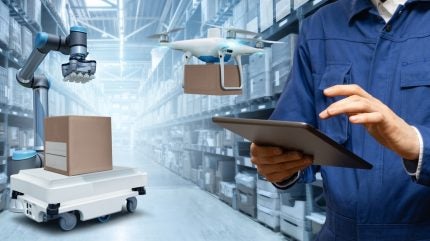
Technology is changing our lives in ways we never imagined. From the way we shop and communicate to how businesses operate, digital transformation is at the heart of this shift.
But what does digital transformation really mean for the packaging industry?
Simply put, it refers to how packaging businesses and manufacturers use digital technology to improve operations, enhance customer experiences, and stay competitive in an increasingly digital world.
For lay readers, digital transformation may sound complex, but it is something we encounter every day. When you scan a QR code on a product to check its authenticity, order customised packaging for an e-commerce purchase, or see smart labels that track a package’s journey, you are witnessing digital transformation in action.
This article explores how technology is driving this change, the challenges packaging businesses face, and what the future holds for digital transformation in the industry.
The role of technology in packaging transformation
Technology is revolutionising the packaging sector, providing businesses with the tools they need to modernise production and improve efficiency. Digital printing, for example, has enabled brands to create highly personalised packaging with variable data printing, reducing costs and increasing flexibility.
This allows for shorter production runs and faster time-to-market, which is particularly beneficial for limited-edition products and seasonal promotions.
Automation and artificial intelligence (AI) are also transforming packaging operations. AI-powered quality control systems can detect defects in packaging at high speeds, ensuring consistency and reducing waste.
Machine learning algorithms help optimise packaging design for cost efficiency and sustainability by analysing material usage and supply chain logistics. In warehouses, robotic automation speeds up packing and shipping processes, improving productivity and reducing human error.
The Internet of Things (IoT) has further revolutionised the industry by enabling smart packaging solutions. IoT-connected sensors can track temperature, humidity, and location, ensuring perishable goods, pharmaceuticals, and high-value items are transported under optimal conditions.
Smart packaging also enhances consumer engagement through interactive features such as NFC-enabled labels, allowing customers to access product information, verify authenticity, or receive personalised marketing content.
For consumers, these advancements translate into better product experiences. Smart labels provide real-time information about ingredients, allergens, and recyclability, enhancing transparency and trust.
Sustainable packaging innovations, such as biodegradable materials optimised through AI research, ensure that businesses can meet growing environmental demands without compromising functionality.
Overcoming challenges in packaging digitalisation
Despite its advantages, digital transformation in packaging comes with challenges. One major hurdle is the initial investment required for adopting new technology.
Many packaging companies, especially smaller ones, struggle to justify the costs of implementing advanced digital printing systems, AI-powered quality checks, or smart packaging solutions.
However, gradual investment and phased implementation can help ease the financial burden while allowing companies to remain competitive.
Another significant challenge is data security. As packaging processes become increasingly digital, companies handle vast amounts of sensitive customer and product data.
Cybersecurity threats, such as data breaches and counterfeit tracking vulnerabilities, pose risks to both businesses and consumers. Implementing strong security protocols and encryption technologies is crucial for protecting digital assets and ensuring compliance with data protection regulations.
Workforce adaptation is another concern. Employees accustomed to traditional packaging methods may find it difficult to transition to digital workflows. Investing in training programmes and fostering a culture of continuous learning can help bridge this gap, ensuring that workers develop the necessary digital skills to operate new technologies effectively.
For consumers, the challenge lies in ensuring accessibility and ease of use. While smart packaging offers valuable benefits, excessive reliance on digital elements—such as requiring a smartphone app to access product details—could alienate less tech-savvy customers.
Striking a balance between digital innovation and user-friendly design is key to maximising the benefits of smart packaging.
The future of digital transformation in packaging
As technology continues to evolve, so will the digital landscape of packaging. One major trend shaping the future is the rise of digital twins.
This technology creates a virtual replica of physical packaging processes, allowing manufacturers to simulate and optimise production, reducing waste and improving efficiency.
Digital twins can also be used to predict potential failures in packaging lines, enabling proactive maintenance and minimising downtime.
Blockchain technology is also expected to play a crucial role in the packaging industry. Known for its ability to create secure and transparent supply chains, blockchain can help combat counterfeiting by providing tamper-proof records of a product’s journey from manufacturer to consumer.
This is particularly valuable for industries such as pharmaceuticals, where verifying the authenticity of packaging is critical for safety and compliance.
Sustainability will remain a major driver of digital transformation in packaging. AI-driven material selection tools will help businesses identify the most sustainable packaging solutions based on recyclability, biodegradability, and carbon footprint.
Digital printing advancements will further reduce waste by eliminating the need for mass production and excess inventory.
For consumers, digital transformation will continue to enhance convenience and engagement. Augmented reality (AR) packaging experiences may become more widespread, allowing customers to scan a product and see interactive content, such as recipe ideas or sustainability certifications.
IoT-enabled smart packaging will improve product safety by providing real-time freshness indicators and expiry alerts.
Digital transformation in packaging is no longer a distant concept—it is happening now. Companies that embrace innovation, invest in technology, and prioritise sustainability will be best positioned for success in the evolving packaging landscape.
As technology advances, adaptability will be key in shaping the future of packaging.



